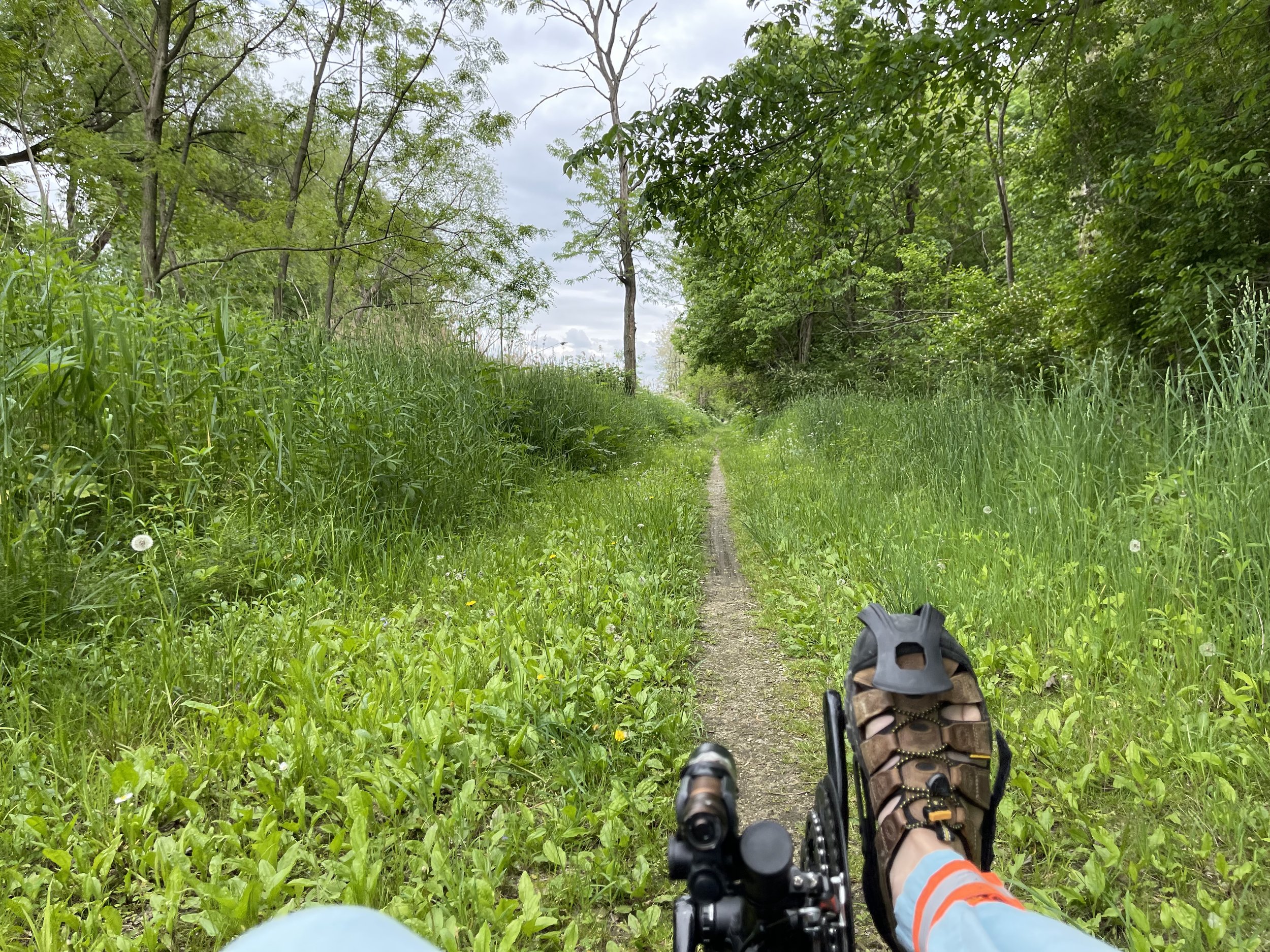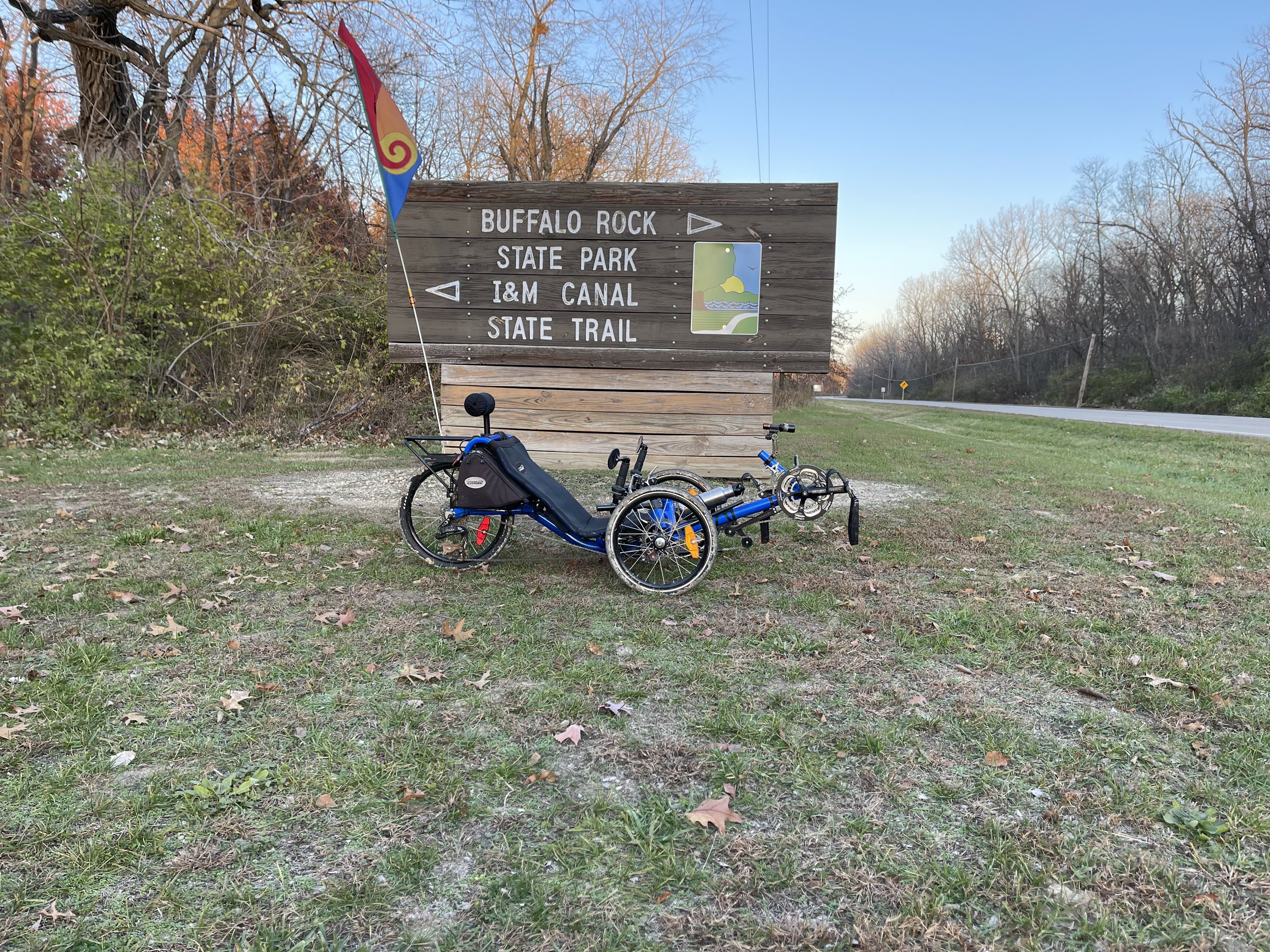I posted last time about my efforts to find a way to ride that wouldn’t put me out on the road in the deafening wind of late February. I had a primary plan of heading down to the I&M Canal Trailhead in LaSalle, with a backup plan of just going into town and riding around the all-too familiar streets of my childhood home.
I’d formulated the backup plan because I really didn’t have a clear idea of what the conditions would be like on the Canal Trail. This has been a struggle both with respect to finding out current conditions, and how the trail is managed for the winter and snow in general. Viz: do they clear the trail, do they groom it for skiing, do they let snowmobiles use it? What’s the story?
I’ve tried asking after this on social media in the past, but the extensive nature of the trail makes it difficult to sort out - it appears that different areas may manage their sections of the trail differently, so sorting out an answer for the area of one’s own specific interest can be challenging.
You know - unless you actually go and look at it. This has been on my list for some time - the last several years, to be honest. But the trailhead is a half-hour away, and there are usually other things to do (like riding out of my own driveway) to compete with the investigation.
I figured this was going to finally be my opportunity to find out.
Let’s get the good news out of the way: I didn’t have to resort to Plan B.
When I got the trailhead it was clear that the low-lying nature of the canal and the woodlands around it were helping to avoid or screen out most of the wind that I had been contending with on the open prairie. This was sort of a bonus - I thought that might be the case, but I wasn’t really sure it would turn out to be.
The trail itself turned out to be an interesting mix of surfaces. A couple of days of above-freezing temps had melted the snow away in the more open spots…
…while the shady areas retained more coverage.
I also quickly got my answer to how the trail is managed for winter use:
In addition to the hazard marker there were also “curve ahead” signs on a couple of sections of the trail further down. I’m a little ashamed to admit that at first I found these a bit odd - I mean, what cyclist rides so fast on these trails that they need a curve warning? - before I realized that they were for the snowmobiles.
The snowy sections made it clear that, despite the signs for the powered sleds, there is quite a bit of mixed use of the trail. There were lots of footprints, dog tracks, and at least one extended section of cross-country ski markings. So: it would appear that this section of the trail, at least, is not cleared, nor is it groomed for skiing. All of which is well enough - I have no objection to snowmobiling, and in fact spent a fair portion of my youth sliding around the winter countryside on an Artic Cat Lynx my own darn self. But it means that you’d likely need a fat bike or trike to tackle it when there’s been a sizable deposit of the white stuff (and I do not currently have such a machine in my stable).
But none of that applied to this ride. The snow-covered sections were not so deep that they couldn’t be managed by my mostly stock Catrike Expedition with her road tires, so I was all good on that front.
I did become acutely aware of a couple of things as the ride progressed, however. First, I was thankful for the presence of my fenders for, oh, say, the thousandth time, as temperatures in the mid- to high-40°’s conspired with the snow to allow for a lot of standing water along the trail. I also found that, while my rear fender does prevent that telltale cycling mud-stripe from appearing on your back, it is still possible for your posterior to become soaked under the right circumstances.
It was also clear that I had hit the trail on perhaps exactly the right day. Where the snow had mostly melted away the ground was soft underneath. But, thankfully, the thaw had thus far only affected the first inch or so of topsoil. This meant that, while it was slow going in some spots, there was none of the deep mud suck that can happen after several days of spring warming. It took me a little bit to figure out, but it turned out it was a little better to ride thru the wetter sections of the trail. The standing water was perhaps acting as an insulator, or possibly was just a sign that the ground underneath hadn’t warmed enough to absorb the water, but either way it was typically more solid that the stuff free of moisture. I’m pretty sure it sections would be very challenging with another day or two of temperatures above the freezing mark.
I decided to stop at the new bridge over the former rustic creek crossing. This spot is a little over seven miles in, and so made for about a 14-mile round trip. This fit nicely with the time I had allotted for the ride, and if I’m being honest, as wet as it was, I did not want to contend with the clay-soup sections that lie between the bridge and Buffalo Rock State Park.
As it was, my orange girl collected a fair amount of trail residue along the way…
…but that’s a good thing in the grand scheme of things, because the dirt means I got to ride. And all in all, it was a good ride. A few more days of thaw and it would have been considerably less pleasant - soft, slow, and messy - but then that’s a reality of both the big canal trails here in northern Illinois. But I was able to luck in on a good moment this time around.












